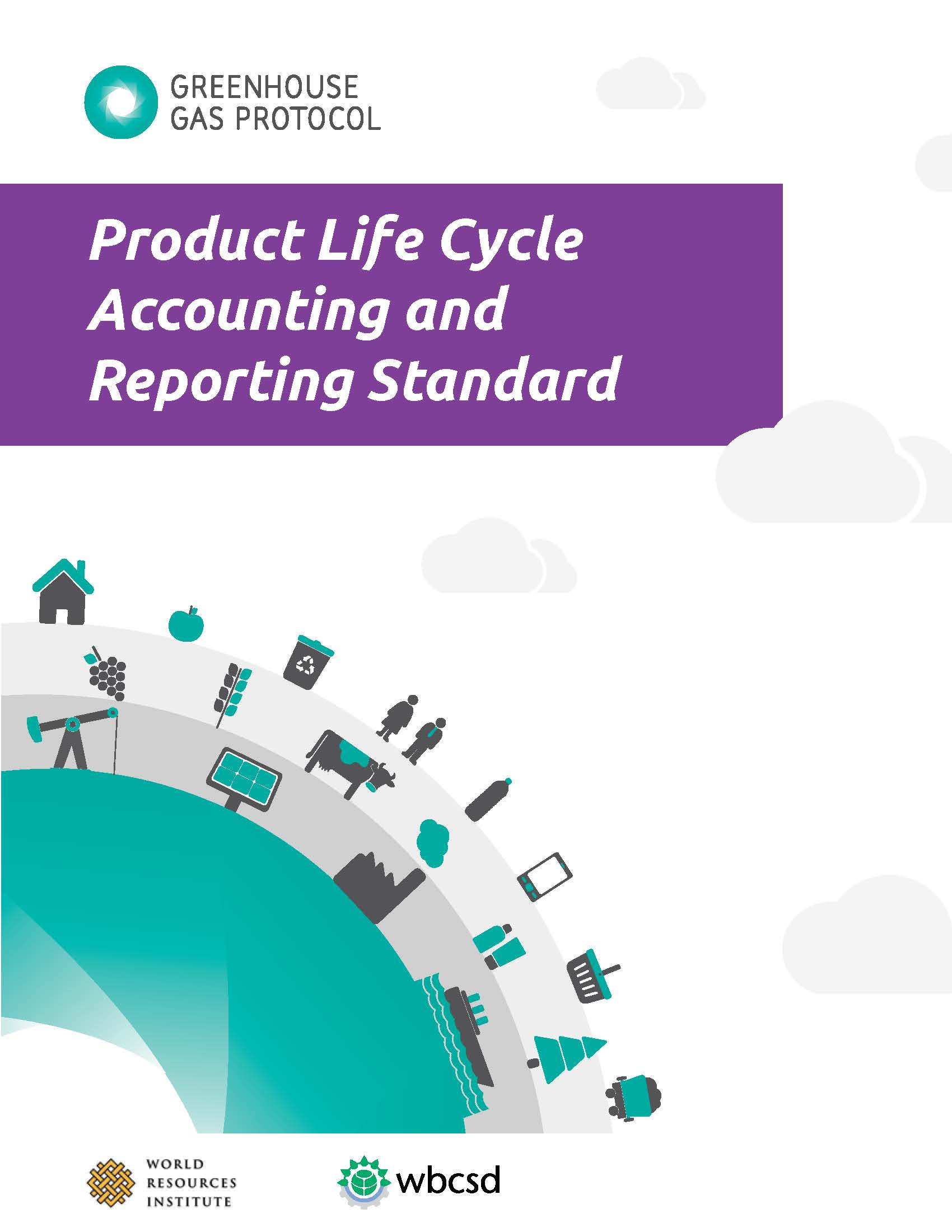
Product Standard
For easy reading on your computer, notebook, tablet, or handheld device, click above to download the electronic version of the Product Standard. This version provides hyperlinks between the standards text, tables and images. Please note that the page numbers vary slightly between the original and electronic versions. When citing specific page numbers, please note when you are referring to the electronic version text.
Product Standard Background
The Product Life Cycle and Corporate Value Chain standards have been created through a broad, inclusive, multi-stakeholder process. Over a three year period:
- 2,300 participants were involved from 55 countries;
- 112 members formed technical working groups to draft the standards, and;
- 38 companies from various industries road tested the standards in 2010.
The standards provide a methodology that can be used to account for and report emissions from companies of all sectors, globally. They are accompanied by user-friendly guidance and tools developed by the GHG Protocol.
What is the Product Life Cycle?
The Product Standard can be used to understand the full life cycle emissions of a product and focus efforts on the greatest GHG reduction opportunities. This is the first step towards more sustainable products.
Using the standard, companies can measure the greenhouse gases associated with the full life cycle of products including raw materials, manufacturing, transportation, storage, use and disposal. The results can create competitive advantage by enabling better product design, increasing efficiencies, reducing costs, and removing risks.
The standard will also help companies respond to customer demand for environmental information and make it easier to communicate the environmental aspects of products.
What others have said about the Product Standard
A consistent approach to measure and report GHG emissions in the corporate value chain and product life cycles are in great demand. These standards will help us respond to customer demand for environmental information and make it easier for us to communicate the environmental aspects of our products and the efforts that our company is making to successfully manage our emissions.
Steve Leffin, Director of Global Sustainability, UPS
The broad scope and diversity of our operations means that having a common method to measure and understand the emissions across our value chain is essential. The GHG Protocol standards provide us a globally applicable method for quantification as well as guiderails to adapt and identify the best opportunities for efficient and effective emissions management. This is an economically, as well as an environmentally valuable tool.
Robert ter Kuile, Senior Director Environmental Sustainability, PepsiCo
The GHG Protocol Product Standard gives us a globally consistent approach to measure and manage our product emissions that will help us innovate and improve our products over time. This knowledge may bring us savings in both carbon and cost, but it is also exciting to think what this might mean for the future of customer education and purchasing. In a world where knowledge is power, the GHG Protocol Product Standard gives us and our customers the information needed to make informed decisions.
Kevin Anton, Chief Sustainability Officer, Alcoa








